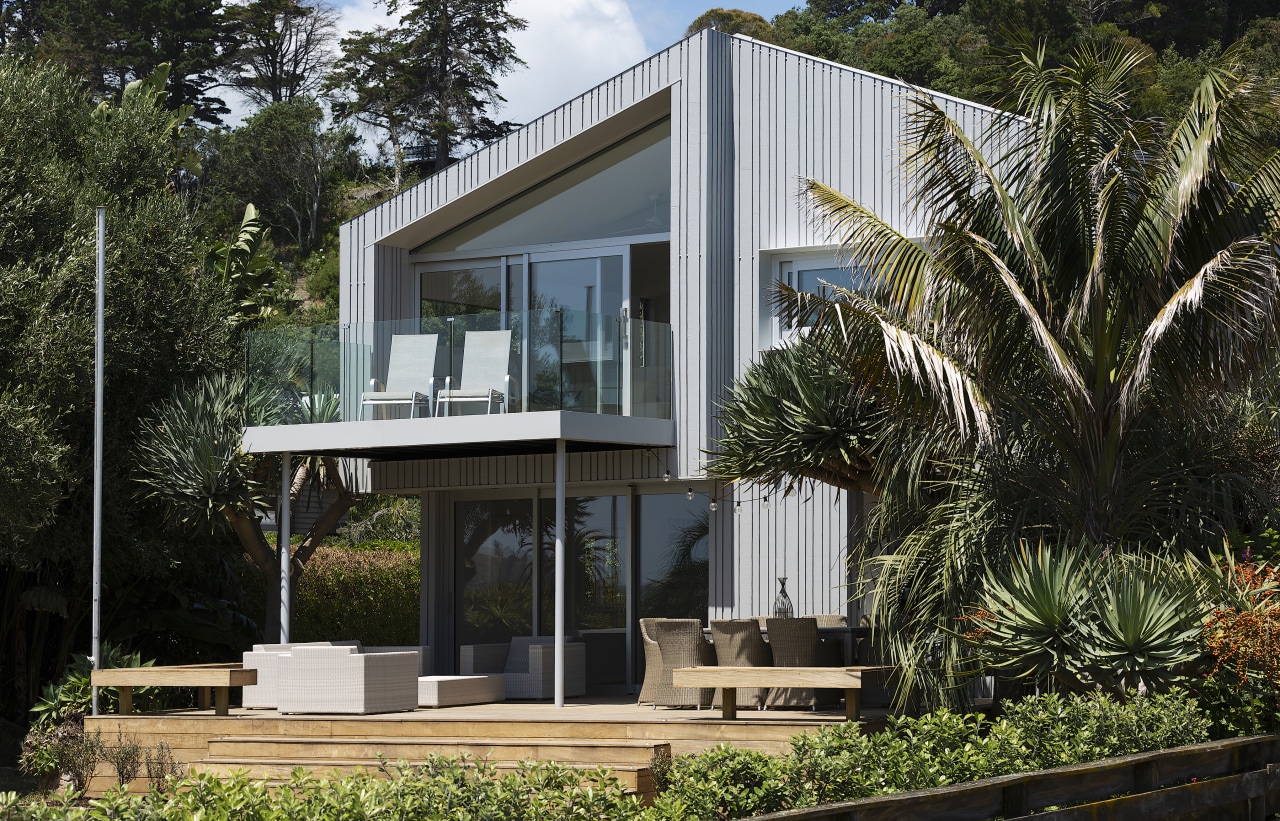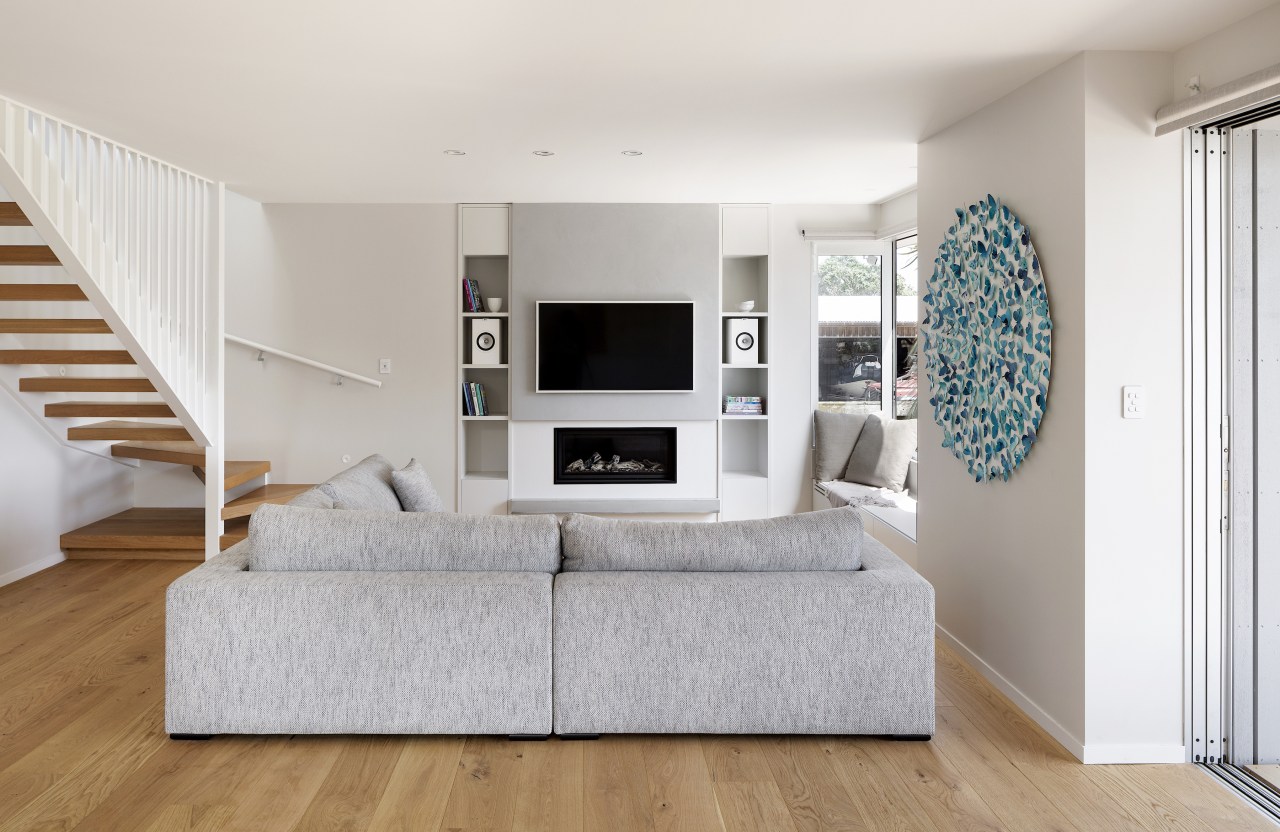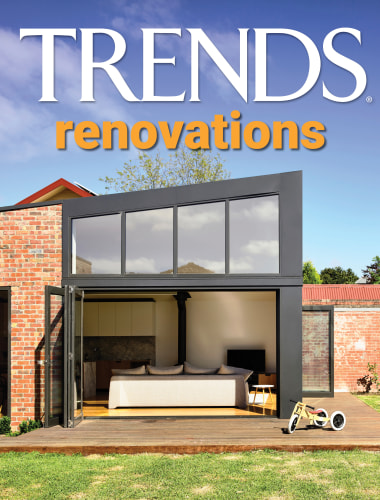Heightened perspective
Extending vertically, this astute renovation provides privacy separation for the generations as well as enhancing the outlook over the beach – sustainability and harmony were key factors
Designed by Wendy Shacklock, Wendy Shacklock Architects
From the architect:
Project description & constraints
This is a north facing site fronting Onetangi beach with narrow public road running between the house and beach.
The original single storey bungalow was built in 1940 and has been largely retained.
The front six metres of the existing house has been replaced by this project over two storeys.
Site coverage was very challenging with several wastewater field regulations and requirements to be met.
Additional area could only have been achieved with a second storey.
The existing house was to be kept with only an upper bedroom and living added above.
Design response
The homeowners wished to expand their existing beach house and extending vertically provided privacy separation for the generations as well as enhancing the outlook over the beach.
Elevating the original front bedroom enabled the existing living area to double across the front of the house opening to the north.
Joinery slides from east and west into a central pocket.
The new upper deck provides cover to part of the lower deck.
The design intent was to express the new form as a distinct addition, overhanging the original house.
It is wrapped in the roofing material with the timber rainscreen front and back contrasting the existing weatherboards in a modern vernacular, in sympathy with the existing scale and unified by colour.
The upper floor is divided into an enclosed sleeping zone and an open living area with vistas out to sea and back to the bush.
The void brings light down into the original previously dark interior.
Material selection
This build is largely traditional timber construction with the weathertight cladding achieved with plywood and roofing material.
Custom detailing of the battens and the guttering achieves the crisp form.
Where possible, existing walls were kept so external materials were to be compatible while still being intended to read as new.
Much of the new exterior is clad in Alumigard for low maintenance and durability beside the sea.
Likewise, the timber walls have been painted not stained for practicality and to reference the existing weatherboards.
Pine ply cladding is over-battened with cedar (chosen for stability).
Window joinery is APL triple track, anodised for longevity in the sea zone.
Interior materials are simple and cost-driven, being gib and an engineered oak flooring with key oak elements – bedhead, en suite and stairs together with internal shutters divide sleeping and living.
Sustainability statement
The design is well considered in all aspects of orientation to provide a passive interior environment for all seasons with appropriate sun mitigation and cross ventilation.
The northern elevation is the active interface with the exterior environment and includes overhangs, eyebrows, and pockets to achieve appropriate sun angles, shade, shelter and ventilation.
Roof water is collected so the gutter design is a key element of the side elevation to still achieve a flush wrapping of the roof and walls in one.
Sensitively altering and adding to an existing house and preserving almost all of the old is the ultimate design decision for sustainability.
The predominant sustainability decision was to keep the wall and weatherboards on the eastern elevation and as much of the original as possible.
The existing house is already 80 years old and proximity and exposure to the sea and maintenance of material was a key driver in the decision to clad the roof and sides in aluminium as was painting of the timber rather than staining and oiling.
Both aluminium and timber can be repurposed, although the intended life cycle is likely to be more than 50 years.
All rainwater is collected and filtered for drinking and household use while wastewater is treated on site.
Cooling is all passive while heating includes a gas fire for boosting in mid winter – plus winter solar gain is achieved and insulation has been added to the original house.
Minimal concrete has been used just in new foundations and original weatherboards have been reused where possible.
Credit list
Renovating architect
Roof
Paint
Light fittings
Awards
Home kitchen bathroom commercial design
Renovations
Renovating your home is an opportunity to refresh, expand and renew. Here's all the inspiration, ideas and information y...
Read More














